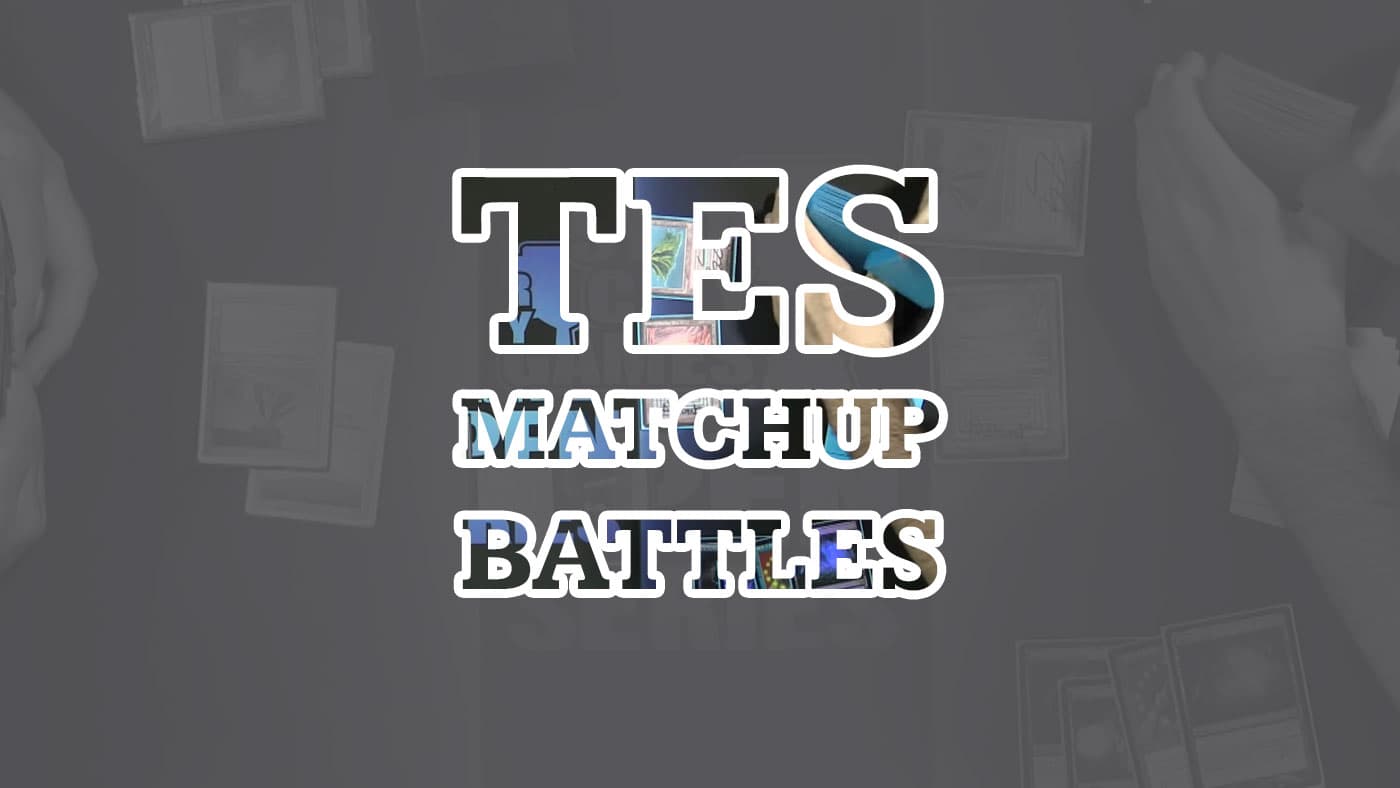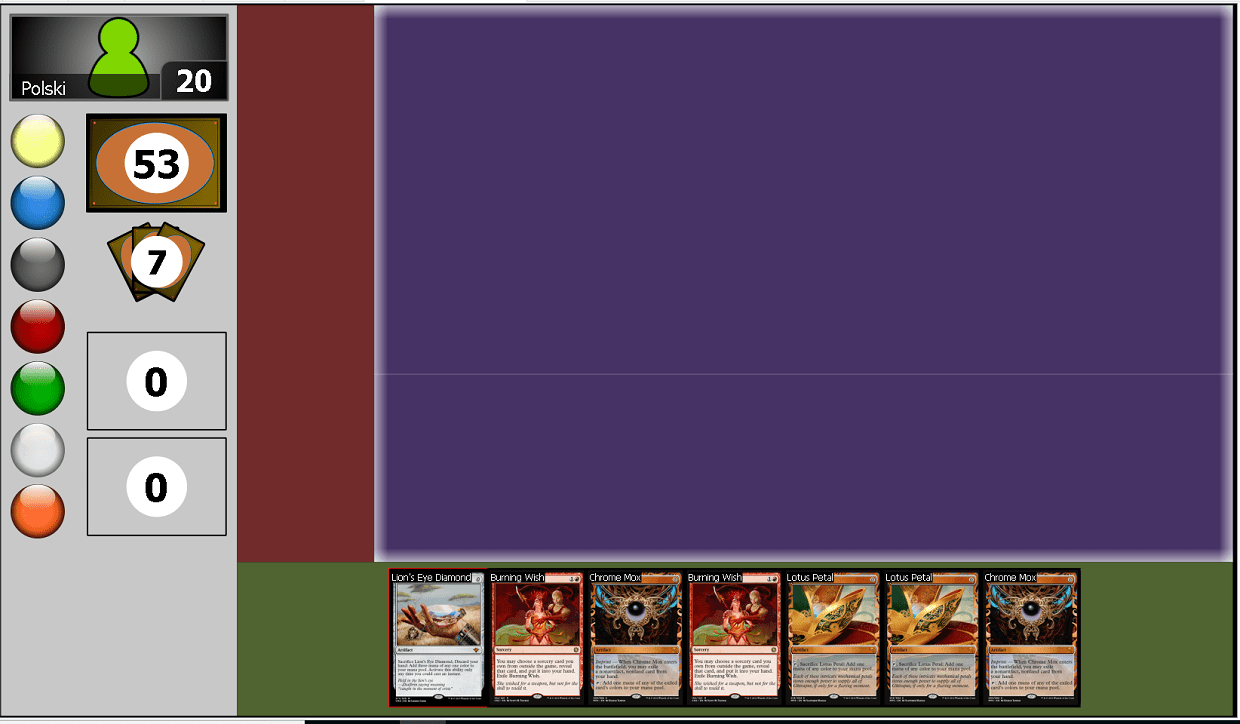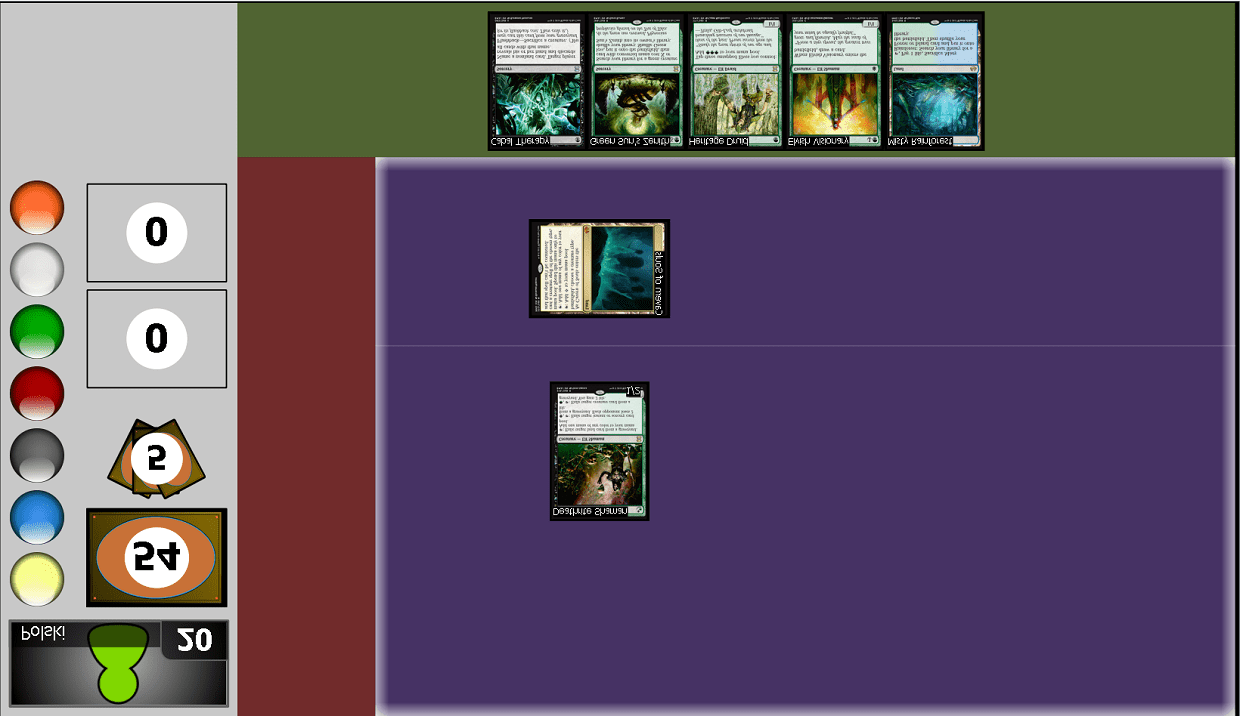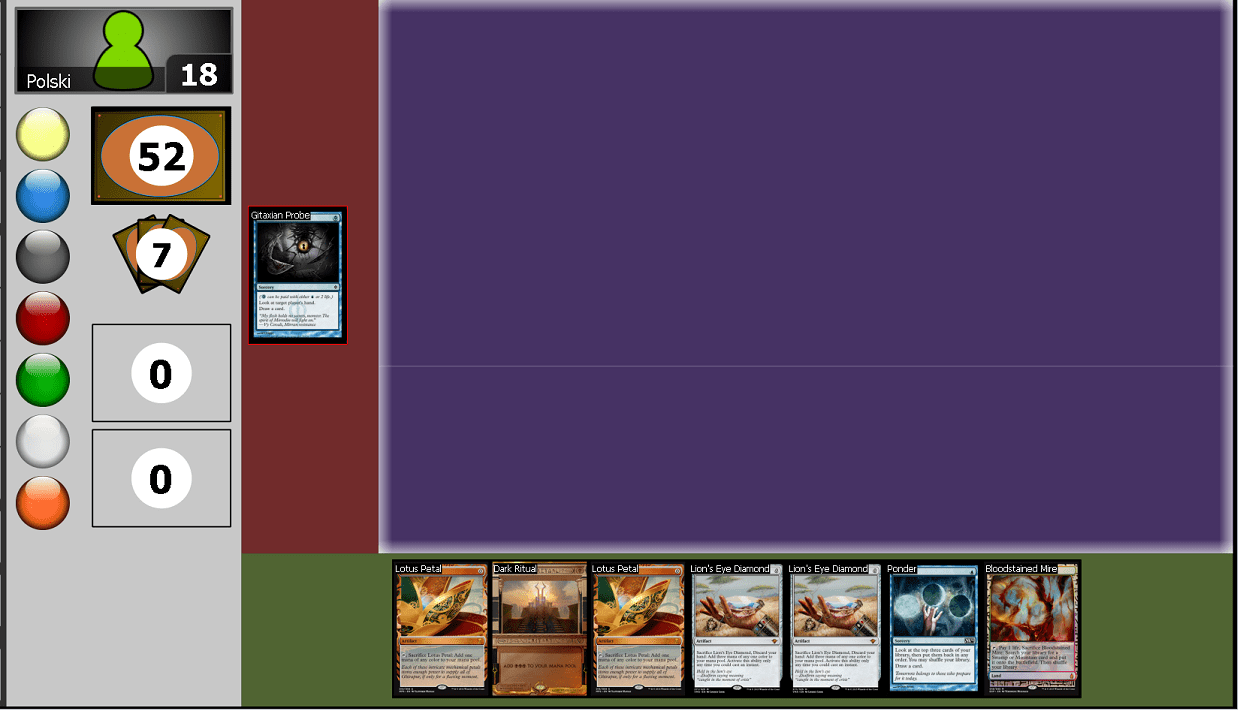Elves is an aggro/combo engine deck that uses synergy and many small incremental advantages to build up an enormous amount of cards and mana, like storm, in order to play giant monsters and win the game in a single turn. However, while elves is most commonly known for its ability to combo off and win early in the game, it is also an extremely resilient deck that can put up a respectable midrange fight. This is one of the most misunderstood consceptions about elves is that it is often considered just a combo deck, and many players don't respect their midrange game. Luckily for TES, we are going to do that exact thing, ignore their midrange plan. This matchup comes down to racing with often minimum disruption. Neither player wants too much disruption without the ability to kill quickly. One of the big errors I see people making from the storm perspective is to think this matchup is a bye because elves are too slow, or have no disruption, and often don't know the elves game plan in this matchup. Elves has been a deck for way too long to not be familiar with it, so let's break it down.
How does Elves matchup against TES?
Natural Order, Craterhoof Behemoth, Glimpse of Nature - These are their combo cards, and what we should most be afraid of game 1, and probably even post board too. It's what allows them to race and kill very quickly. They can do this as early as turn 2 and 3. Being able to Natural Order for a Craterhoof Behemoth is quite a bit of damage and doesn't take too many extra elves to be lethal. Glimpse of Nature is their way of being a pretend storm deck. They can just churn through their deck drawing an insane amount of cards for 1 mana and it's just a matter of time until they find a Natural Order, Craterhoof Behemoth, or Green Sun's Zenith.
Game 1 there is basically no disruption it often just comes down to a straight race.
Thoughtseize, Cabal Therapy - In the sideboard elves brings in discard spells to try to fight combo decks since they have very little interaction main deck. Discard spells are a staple of legacy and something we should be very familiar with playing against. Their goal with these spells aren't necessarily to try and prevent us from comboing off, because we all know storm can beat 1 or 2 discard spells. Their goal is to just slow us down by a turn or 2, so they can combo off before us. They are a little slower of a deck, but these discard spells can allow them to race us much better.
Ruric Thar, The Unbowed, Gaddock Teeg - In post board games elves bring in a couple haymaker creatures that are almost impossible to beat without answering them. Gaddock Teeg shuts off 2 out of our 3 win conditions, Tendrils of Agony and Empty the Warrens, but still leaves Grapeshot. Ruric Thar, The Unbowed is usually lights out on all win conditions and will require a bounce spell if resolved. Gaddock Teeg is the scarier of these 2 options because it is a little quicker to cast and can be tutored for by Green Sun's Zenith a little earlier. They both can be tutored for with Natural Order when Craterhoof Behemoth isn't good enough. The good side here is that not every list runs both or even 1. Some may just rely on discard and trying to combo off themselves.
Mindbreak Trap - When storm decks are popular elves will often pack a couple copies of Mindbreak Trap in their sideboard to help them with this matchup, because storm is favored by quite a bit. A lot of the most recent lists haven't been running it because storm isn't as popular as it was about a year ago, but it is a card that they definitely could have. This is one of the hardest cards to beat when we don't get access to seeing their hand, and can lead to some blowouts for sure. You don't really expect elves to have counterspells or to be playing at instant speed, so sometimes this just gets you. The good news is we have a lot of ways to see their hand and we keep all of our discard spells in post board. This is just a card to keep in mind when you have a Cabal Therapy on your combo turn.
Deck List
Ways to win this matchup
Killing Them and Our Game Plan
Beating elves is unique to many other matchups in legacy. There are not a lot of combo decks that can also play a grindy midrange game, but there are some like Alluren and Food Chain. These decks sit on a scale of combo speed, disruption, and midrange. Elves is directly on one side of that scale in that they are the fastest of these combo decks, but also play the least amount of disruption. So, our game plan is not the same as in those other matchups. Against elves we will be focusing all about speed and not worrying about counterspells or major disruption. Our only concern is them trying to combo off before us. There is one trick to this though. We need to be as fast as we can, but also by not using Empty the Warrens a majority of the time. Elves can go much wider than a lot of other decks and can put out a massive army to block, so unless it's on turn 1 on the play for a lot of goblins it's usually not good enough.
Sideboarding
I always swap Empty the Warrens for one of the win conditions, either Grapeshot or Tendrils of Agony because of how bad Empty the Warrens is, and I like some win condition in the main deck in case of Surgical Extraction and being able to Infernal Tutor for a win condition. Tendrils of Agony is a lot easier to combo off with, but I personally prefer Grapeshot because it makes Ad Nauseam better, can be used as a sweeper, and gets around Gaddock Teeg. The decision is really up to you though. If you see the opponent has things like Gaddock Teeg or Ruric Thar, The Unbowed then I bring in the bounce spells. I usually do it for game 3 if I see them instead of bringing them in no matter what, because ultimately our goal is to race and have a quick kill and I don't like diluting my deck with bounce spells without for sure knowing if they have these cards or not.
(adsbygoogle = window.adsbygoogle || []).push({});
Game Play
Onto an example match!
I win the die roll, so I am on the play and choose to play first. I go into this match already knowing I'm playing against elves just to get in reps and practice. I keep my opening 7 and here's what we got:
 In the dark I would immediately keep this and go for the Empty the Warrens to make 14 goblins. I know this is elves though and they have a combo aspect, and Empty the Warrens is typically pretty bad here, but will it be good enough? Do we think the opponent can kill us on their turn 2? I think there's a chance they can, but it's so small I'd rather take my odds they can't. Another aspect here is if we don't go for it then do we just mulligan?
I end up keeping and going for it here, knowing there's no counters. Once I make my 14 goblins my opponent draws his card for the turn and immediately scoops it up.
1-0
I sideboard exactly as stated above leaving my bounce spells in my sideboard. My opponent takes the play and here is the situation a little bit into the game where I am casting a Gitaxian Probe:
In the dark I would immediately keep this and go for the Empty the Warrens to make 14 goblins. I know this is elves though and they have a combo aspect, and Empty the Warrens is typically pretty bad here, but will it be good enough? Do we think the opponent can kill us on their turn 2? I think there's a chance they can, but it's so small I'd rather take my odds they can't. Another aspect here is if we don't go for it then do we just mulligan?
I end up keeping and going for it here, knowing there's no counters. Once I make my 14 goblins my opponent draws his card for the turn and immediately scoops it up.
1-0
I sideboard exactly as stated above leaving my bounce spells in my sideboard. My opponent takes the play and here is the situation a little bit into the game where I am casting a Gitaxian Probe:

 Once my Gitaxian Probe resolved I drew a Brainstorm off it. Our opponent has the ability next turn to cast Green Sun's Zenith for X = 2 and search for a Gaddock Teeg if it's in his deck. We don't have any bounce spells in our deck either, so we would need to win with Grapeshot. If it's not then he also could play an elf and cast both halves of Cabal Therapy. I think there are a couple options here -
1) We can try to go all in by using both cantrips here and looking for any tutor effect or an Ad Nauseam and admitting this may be our last turn to try to win this game.
2) We can play our Ponder here and then if we miss just play out all of our artifact mana so they aren't vulnerable to the Cabal Therapy. This plan tries to split it down the middle here by not going all in, but also playing around 1 of his forms of interaction. This plan may hurt if he has a Gaddock Teeg in his deck though, so could hurt us by not casting the second cantrip.
Even though option 1 requires us to not have "perfect cantrips" because we may not have shuffle affects after each one to get full optimization after them, but if we think it's our last turn before it gets too rough we may have to. If you believe just fighting through this and trying to play a longer game (turn 3-4) then maybe we go with option 2 of just trying to play a cantrip and then putting everything on the table to leave potential draws in the future live. Also when dealing with Cabal Therapy we have no clue what he may name. By showing him all the artifacts there's no way he names a tutor or we would have just gone for it, so what would he name? He definitely takes something on the back end though, but we may have control of that based on what we play. Obviously a lot depends on what we see from the cantrips and I am aware that does affect the decision, but what would be your game plan if you cast the Ponder and had to shuffle? All of these decisions dictate a win or loss this game.
The TES community is one I love for many reasons, but my favorite reason is that we can talk through plays and lines and it's interesting to hear how other people play the deck and approach situations. How aggressive people are and how they approach key turns is crucial to a deck like TES and make it one of the harder decks to play in legacy, because it can play to your play style at times like in the above example. I tend to be a very aggressive player and it's my draw to this deck, so I would probably fire off both cantrips here if I had to and just go for it. This is a prime example of our decisions being based off the opponent's 75 card decklist and whether you think they have a Gaddock Teeg or not, and if so how likely is it that we beat it? And if they don't then how do we best beat this Cabal Therapy. This example reflects how TES and legacy require you to know your opponent and their deck as well as your own and how to evaluate yourself as a player, and where you fall on the aggressive spectrum. I know there's some unknowns here and the result of these cantrips, but think out all scenarios here and how you would play them if your Ponder or Brainstorm bricked, then what?
I hope we can have a discussion on the last scenario and as always I learn from the community just as much as the readers, but until the next one let's keep the conversation going.
Once my Gitaxian Probe resolved I drew a Brainstorm off it. Our opponent has the ability next turn to cast Green Sun's Zenith for X = 2 and search for a Gaddock Teeg if it's in his deck. We don't have any bounce spells in our deck either, so we would need to win with Grapeshot. If it's not then he also could play an elf and cast both halves of Cabal Therapy. I think there are a couple options here -
1) We can try to go all in by using both cantrips here and looking for any tutor effect or an Ad Nauseam and admitting this may be our last turn to try to win this game.
2) We can play our Ponder here and then if we miss just play out all of our artifact mana so they aren't vulnerable to the Cabal Therapy. This plan tries to split it down the middle here by not going all in, but also playing around 1 of his forms of interaction. This plan may hurt if he has a Gaddock Teeg in his deck though, so could hurt us by not casting the second cantrip.
Even though option 1 requires us to not have "perfect cantrips" because we may not have shuffle affects after each one to get full optimization after them, but if we think it's our last turn before it gets too rough we may have to. If you believe just fighting through this and trying to play a longer game (turn 3-4) then maybe we go with option 2 of just trying to play a cantrip and then putting everything on the table to leave potential draws in the future live. Also when dealing with Cabal Therapy we have no clue what he may name. By showing him all the artifacts there's no way he names a tutor or we would have just gone for it, so what would he name? He definitely takes something on the back end though, but we may have control of that based on what we play. Obviously a lot depends on what we see from the cantrips and I am aware that does affect the decision, but what would be your game plan if you cast the Ponder and had to shuffle? All of these decisions dictate a win or loss this game.
The TES community is one I love for many reasons, but my favorite reason is that we can talk through plays and lines and it's interesting to hear how other people play the deck and approach situations. How aggressive people are and how they approach key turns is crucial to a deck like TES and make it one of the harder decks to play in legacy, because it can play to your play style at times like in the above example. I tend to be a very aggressive player and it's my draw to this deck, so I would probably fire off both cantrips here if I had to and just go for it. This is a prime example of our decisions being based off the opponent's 75 card decklist and whether you think they have a Gaddock Teeg or not, and if so how likely is it that we beat it? And if they don't then how do we best beat this Cabal Therapy. This example reflects how TES and legacy require you to know your opponent and their deck as well as your own and how to evaluate yourself as a player, and where you fall on the aggressive spectrum. I know there's some unknowns here and the result of these cantrips, but think out all scenarios here and how you would play them if your Ponder or Brainstorm bricked, then what?
I hope we can have a discussion on the last scenario and as always I learn from the community just as much as the readers, but until the next one let's keep the conversation going.



















